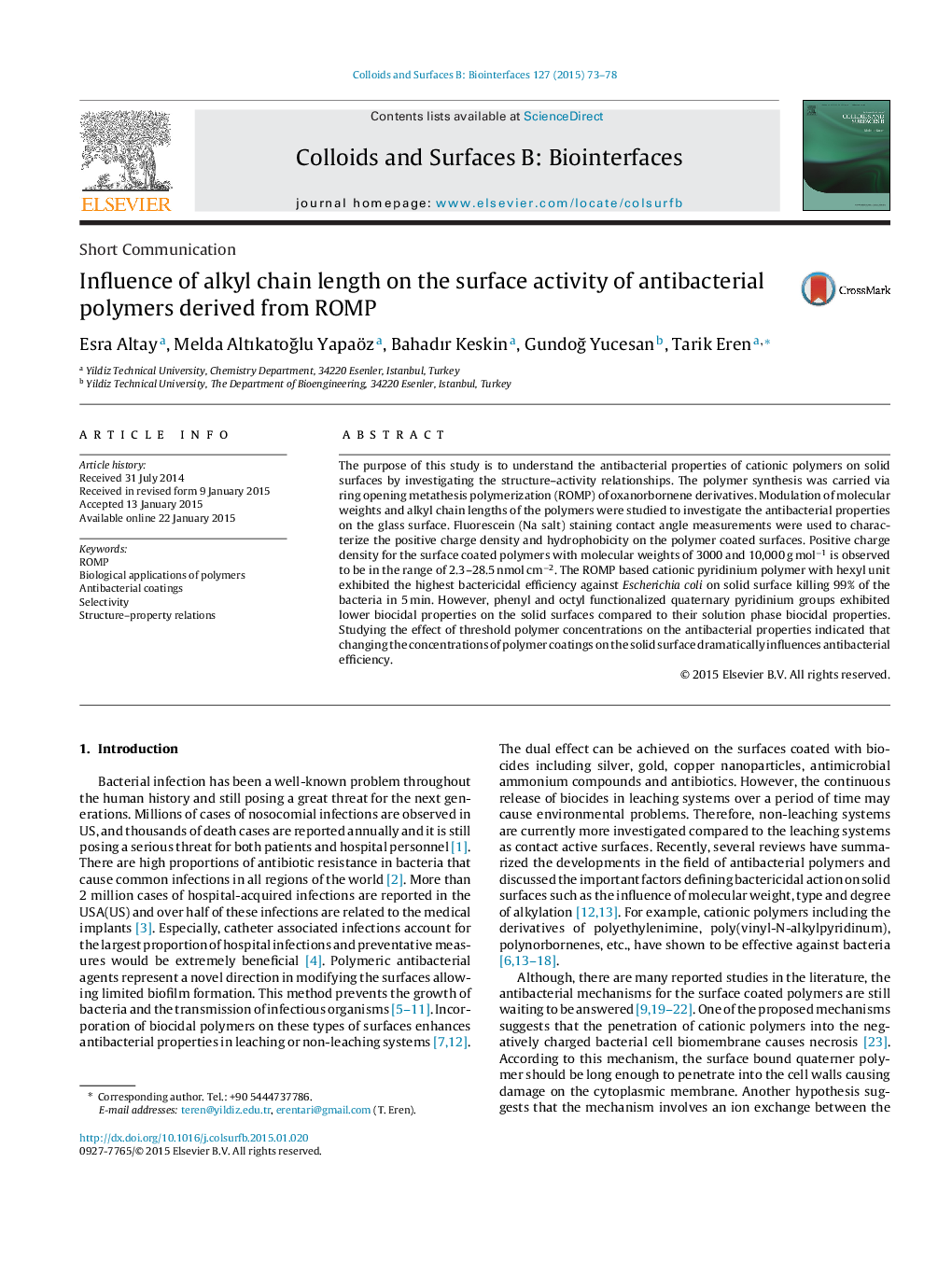| Article ID | Journal | Published Year | Pages | File Type |
|---|---|---|---|---|
| 6981938 | Colloids and Surfaces B: Biointerfaces | 2015 | 6 Pages |
Abstract
The purpose of this study is to understand the antibacterial properties of cationic polymers on solid surfaces by investigating the structure-activity relationships. The polymer synthesis was carried via ring opening metathesis polymerization (ROMP) of oxanorbornene derivatives. Modulation of molecular weights and alkyl chain lengths of the polymers were studied to investigate the antibacterial properties on the glass surface. Fluorescein (Na salt) staining contact angle measurements were used to characterize the positive charge density and hydrophobicity on the polymer coated surfaces. Positive charge density for the surface coated polymers with molecular weights of 3000 and 10,000 g molâ1 is observed to be in the range of 2.3-28.5 nmol cmâ2. The ROMP based cationic pyridinium polymer with hexyl unit exhibited the highest bactericidal efficiency against Escherichia coli on solid surface killing 99% of the bacteria in 5 min. However, phenyl and octyl functionalized quaternary pyridinium groups exhibited lower biocidal properties on the solid surfaces compared to their solution phase biocidal properties. Studying the effect of threshold polymer concentrations on the antibacterial properties indicated that changing the concentrations of polymer coatings on the solid surface dramatically influences antibacterial efficiency.
Keywords
Related Topics
Physical Sciences and Engineering
Chemical Engineering
Colloid and Surface Chemistry
Authors
Esra Altay, Melda AltıkatoÄlu Yapaöz, Bahadır Keskin, GundoÄ Yucesan, Tarik Eren,
